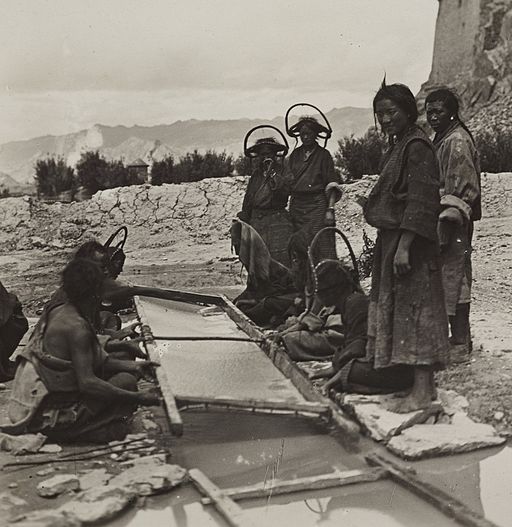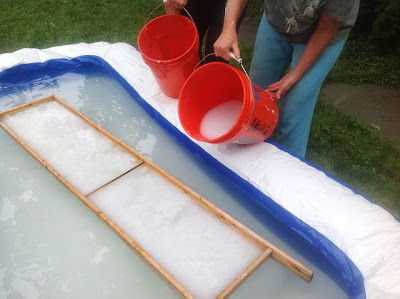I was very excited to see this floating mould on Wikipedia that shows a floating mould so similar to ours, I was really amazed. I wonder what they did with those long scrolls of paper.
Here is our floating mould for comparison:
The mould was constructed by Sheryl using ordinary curtain material attached with brass tacks that could be remounted to reposition the curtain material when sagging or stretched.
Here is the scroll we gave to Chogyal Namkhai Norbu. Sheryl for her recent show used these moulds to construct the marvelous hanging triptyque where she used the scroll paper for making monoprints at Zea Mays where she is a member of their printing
collective.
The dark blotches here in this work are splashes of beaten Iris randomly floated in the mould used to add texture and coloration to the paper.





No comments:
Post a Comment